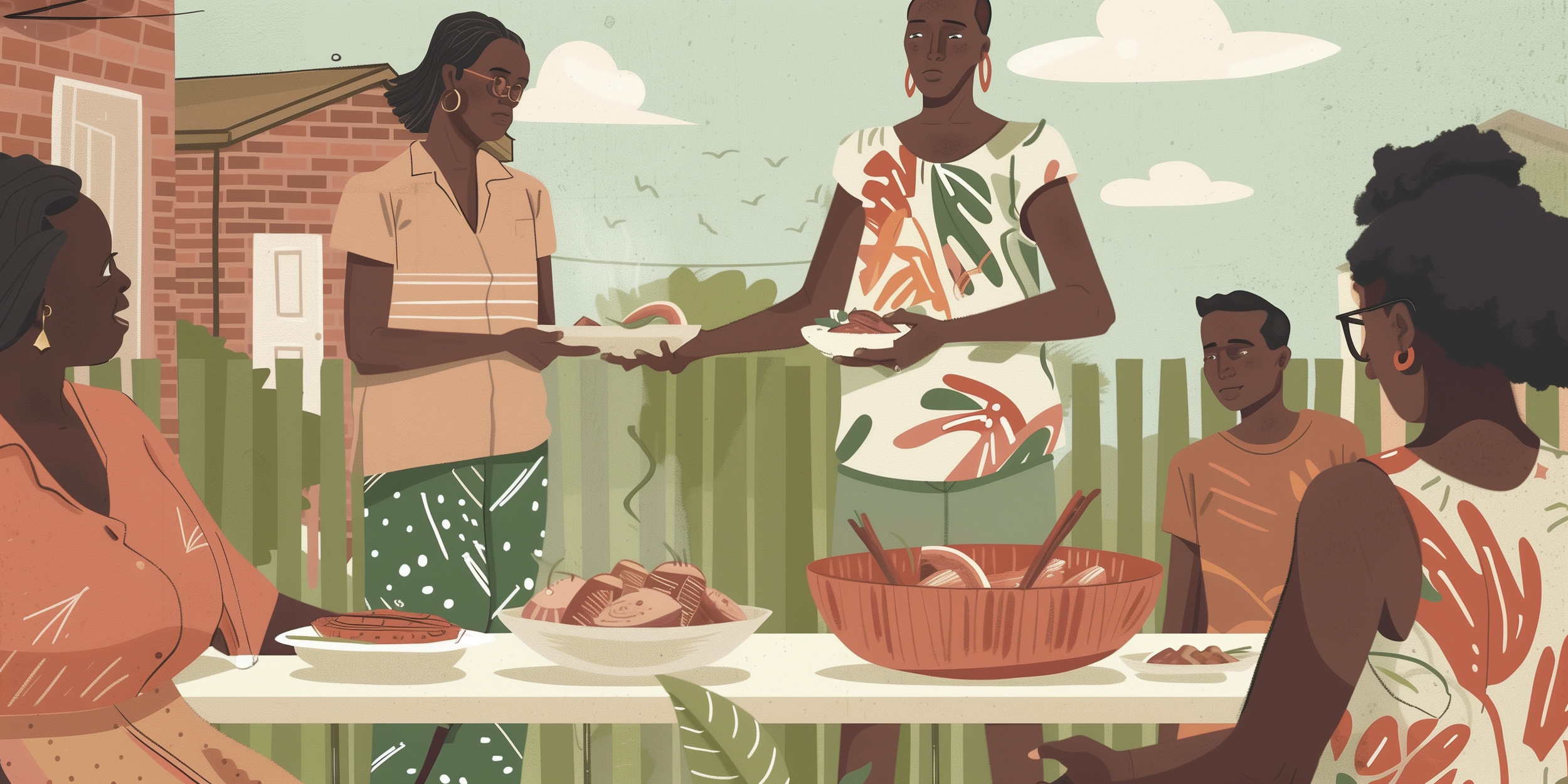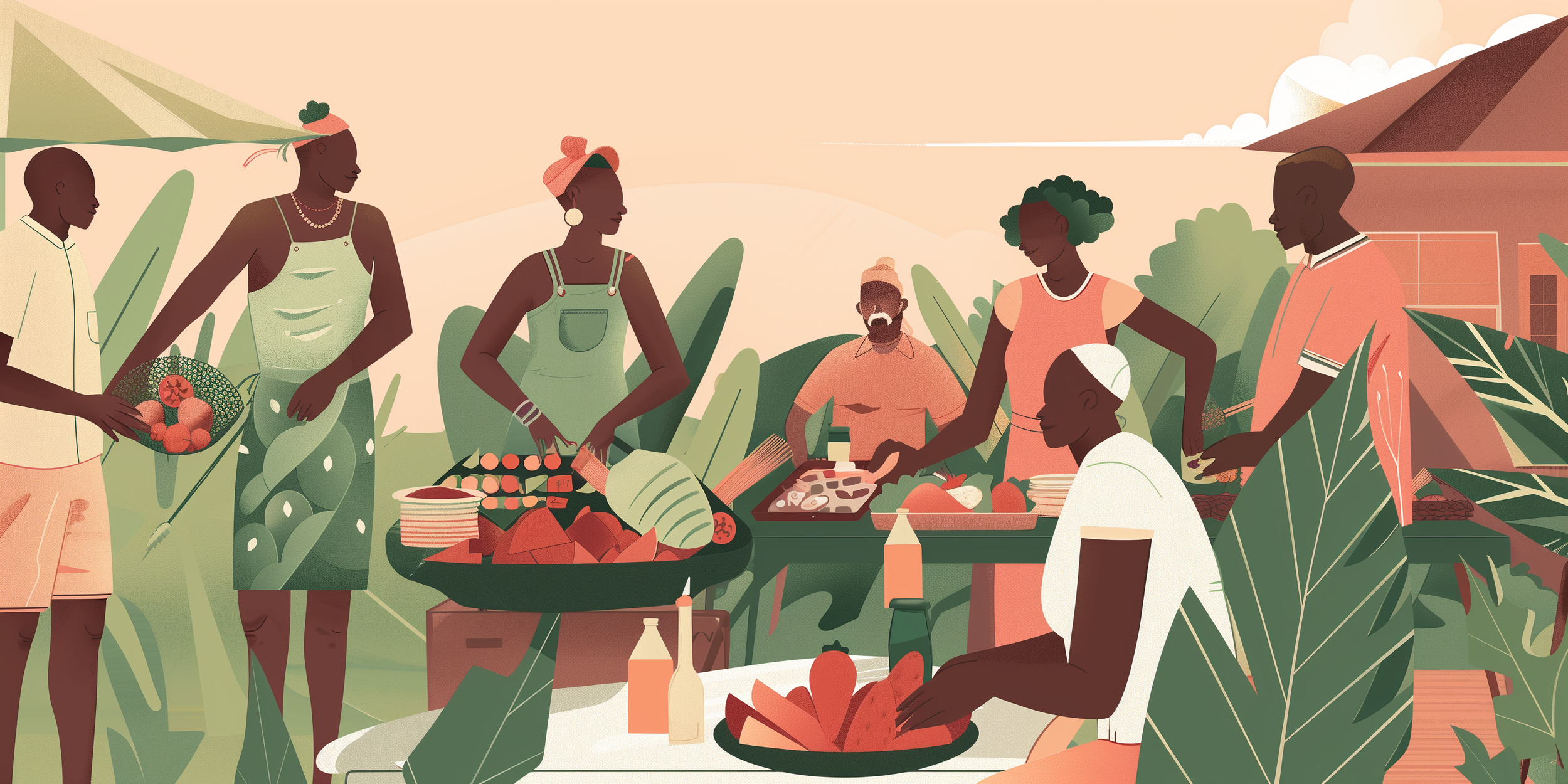Addressing Food Insecurity in Chicago Through Community Engagement and Behavioral Design
Behavioral and Systems Design | 2023 | Designed using Adobe Illustrator, Midjourney and Mural | Role - Design Researcher
As part of a Behavioral Design class led by Prof. Ruth Schmidt at the Institute of Design, I collaborated with Brayan Pabon, Sophie Chen, and Nishanth Srikanth.
My role focused on research, where I conducted ethnography and interviews, and translated the findings into actionable strategies.
Imagine having to take a train or a bus to get a snack.
Imagine having to skip lunch to save money for gas.
Imagine having to choose between who in your family gets to eat dinner.
These are decisions that up to 1 in 4 Americans have to make. Everyday.
Food insecurity is a widespread issue in Chicago, driven by a complex mix of systemic and cultural factors. This project aimed to understand these underlying causes using systems design, identifying key barriers such as economic inequality, limited access to affordable food, and gaps in community support. By integrating behavioral design, the project also focused on creating targeted interventions that address these barriers, promoting more sustainable and effective solutions for improving food access across diverse communities.
Methods
80
Hours of Secondary Research
6+
Hours of Ethnography
2
Expert Interviews
3
Stakeholder Interviews
Research
We started with a mix of primary and secondary research, which revealed that while community members, government bodies, and NGOs are actively working to address food insecurity, their efforts are often fragmented and insufficient to motivate people to adopt healthier diets. Beyond these initiatives, there is a critical need to foster healthy eating habits at an individual level.
Increasing access to food alone isn’t enough to change eating behaviors, which is why interventions like simply opening more grocery stores often fall short. Lasting change requires improving education around food, empowering people to make informed, healthier choices that fit their lifestyles and needs.
Findings
Beyond systemic issues, our research highlighted barriers at the individual level, such as lack of motivation or opportunity to adopt healthier eating habits. For example, people working multiple jobs may struggle to prioritize nutritious meals, or a parent may find it challenging to encourage healthy eating when their child prefers junk food. Limited access to healthy options, particularly in areas served only by convenience stores, further exacerbates the problem. To address this, we need to focus not only on education around building healthy habits but also on helping individuals develop a taste for nutritious foods.
While schools emphasize healthy eating, true education about food goes beyond the classroom. Rituals, cultural practices, and daily routines significantly shape how we learn about food, influencing our habits and identities—whether for better or worse. Through our research, we found that people are often more open to learning about healthy eating in familiar, social settings. This led us to focus on community events as an effective starting point for introducing behavioral changes and encouraging healthier food choices.
How might we better equip people with the information and education they need to make better choices regarding their nutrition?
System Mapping
While there are multiple efforts to reduce food insecurity, they are often conducted by different stakeholders, and focus on only one part of the system.
In order to ensure an effective solution, we need to understand the system, and needs of different of different stakeholders, and how any intervention will affect or benefit them.
Aligned Interventions
As the system is incredibly complex, any attempt at significant, persistent change would require multiple interventions at multiple points in the customer journey. These would need to be aligned to ensure that the change is persistent rather than temporary change.
In order to facilitate this alignment, we created a framework for behavioral change through community engagement.
Framing is important as it reflects identity and context, and affects receptivity.
The first hurdle is attracting people to community events. With busy schedules, a community event can seem like a significant time investment.
While it may seem apt to frame these as cooking classes or farmer’s market, these may not attract the right target audience. But, framing it as a completely unrelated event will affect receptivity. Finding a balance is key.
Piggy-backing off an existing event will be helpful. Communities often have existing networks that are an effective way to spread the message and advertise an event to members of a community, and tapping into these “networks of networks” is key to bringing in people.
Entice
Possible Intervention:
A guide for how to host a community event to incorporate behavioral design elements and drive social change.
Interventions need to build on the existing cultural assets of the community.
Engagement is key to achieving buy-in. And taste is key to engagement.
Any engagement needs to be tailored to the culture of the local community, and build on those assets instead of trying to introduce new flavors and foods. Tapping into the knowledge of local chefs and community leaders is important, as they can provide deeper insights than can be gleaned from research.
Engage
Possible Intervention:
Re-interpreting traditional dishes to incorporate more vegetables / locally sourced/ sustainable ingredients.
The barriers for entry are high and need to be lowered.
Going from someone that doesn’t cook, to someone that can meal plan, shop, prep and cook every meal for a week is a big ask, and can instantly push people away.
Introducing structure, reducing friction and focusing on success stories can help. By starting people off with simple tasks and simple recipes, the barrier for entry is lowered. Slowly increasing the difficulty flattens the learning curve as it focuses on developing one skill at a time, instead of dealing with multiple challenges all at once.
Educate
Possible Intervention:
Provide a “take-home meal box” with the right amount of ingredients and instructions to make one-meal.
Building consistency and persistence is key.
Entry points aren’t enough for persistent change. Prolonged growth needs to be built through consistency, patience and persistence, which in turn requires encouragement.
Encouragement can come in the form of sharing progress, or by having a guide or helpline for instructions or help. Showcasing previous success stories helps motivate people through difficult stages. Emphasizing the long term goals also helps, both from a personal standpoint (becoming self-sufficient, healthy), but also in terms of community (being able to cook healthy meals for the family, being able to host my own event).
Encourage
Possible Intervention:
Encourage sharing of stories regarding outcomes with groups or at future events.
Community events provide an entry point for further community engagement.
Engaging further with the community can help both for individuals, and for event organizers. Linking the two is important in order to scale.
Connecting with local farms to supply the ingredients for an event can help both parties. Informing people about the benefits of locally sourced food can have longer term impacts for the entire system; by increasing demand for locally sourced food will also help community farms, gardens and stores grow, and in turn, bringing down costs. This system will also help people achieve ownership of their personal food rituals and nutrition, as they see the impacts their choices have on the people around them.
Expand
Possible Intervention:
A platform for members of the community to share resources, events and recipes in order to create a local network.




















